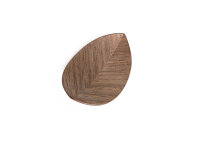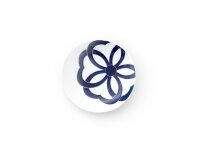Delicious recipe for tempura batter

The right tempura batter makes the dish a delicious delight. Tempura is one of the most popular dishes in Japanese cuisine. While you might have to pay a decent amount for it at a restaurant, this delicacy can also be prepared at home. It's easier and quicker than you think – it just depends on the right batter.

Crispy and light at the same time
Who would have thought that fried food could be healthy? Behind tempura hides fresh vegetables or protein-rich seafood in a thin batter. It's all about the texture: The less that sticks to it, the more the taste of the ingredients comes through. As we already know from Japanese cuisine, the preparation is meant to enhance the flavor rather than distort it.
Tempura satisfies without overfilling. The secret lies in a liquid batter and not frying for too long. Unlike other fried and breaded recipes, it is therefore a healthy alternative. It warms you up in the cold season and provides valuable vitamins; in spring and summer, it serves as a light, invigorating snack.
Learn more about this delicious treat in our blog post: Tempura – Delight in a Batter Coat
Original recipe for tempura batter
The difference is made by the flour. If you use specialized tempura flour from the market or the aisle for Asian cuisine, you only need to add a few ml of water according to the instructions. However, you can quickly prepare the suitable batter for frying from simple ingredients as well.
 2 personsNo. of persons
2 personsNo. of persons
 ca. 30 minutesTotal Time
ca. 30 minutesTotal Time
 easyLevel of difficulty
easyLevel of difficulty
 main mealDish
main mealDish
 ca. 600kcal per portionCalories
ca. 600kcal per portionCalories
 Vegetarian
Vegetarian
 Eggs
Eggs
 Kitchenware
Kitchenware

|
120g
ice cold water
|
|
1
egg
|
|
100g
wheat flour
|
|
100g
food starch (e.g. corn starch)
|
|
1/2 tsp
salt
|

|
Green beans
|
Sweet potatoes
|
|
Pumpkin
|
Mushrooms
|
|
Enoki mushrooms
|
Eggplants
|
|
Zucchini
|
Carrots
|
|
Shiso leaves
|
Chinese cabbage
|
|
White radish
|
...and much more
|

A recipe for the ideal tempura batter? Not that difficult
The finished batter should adhere to the ingredients but not clump together. A spoon can help: If the batter slides easily along it, it should be perfect for tempura. If it is too liquid, it will dissolve during the frying of the tempura. However, if it becomes too thick and forms a too dense layer, the subtle taste and the healthy effect are lost. In the latter case, you can simply add more cold water.
The tempura batter must be cold to expand when frying in oil. This creates bubbles on the batter coat, ensuring a gentle frying process and a delicious result. If time passes between batter preparation and handling, it's best to keep the batter cold.
On the other hand, if you want a firmer, thicker batter, you can also add a packet of baking powder and let it swell for half an hour. This allows you to fry larger portions and other recipes like tempura – or "bake" as seen in Asian cuisine with items such as baked poultry or fruit. A hearty alternative to the restrained cooking process typical of Japan.
As often as not: Practice makes the (tempura) master. Simply try frying a few pieces of fish or vegetables and adjust the batter to your preferences. The entire surface of the tempura batter doesn't have to be covered: It's part of the process for it to slide off some areas when it has the right consistency. Imperfection and naturalness traditionally characterize Japanese cuisine as well. Working with tempura requires finesse and good timing, but it's easy to learn. Soon, you'll be enjoying your first meal.
After deep-frying comes the art
What to do with the finished tempura? Definitely consume it immediately: Freshly fried, this specialty simply tastes the best. Depending on the price and effort, the way tempura is served can vary. For example, the Japanese often enjoy the budget-friendly version, served in a bowl on a bed of rice and accompanied by a delicious sauce. In a traditional manner, tempura is arranged on a long, elegant plate alongside small side dishes.
In any case, as an appetizer, miso soup is a must, just like a bowl of rice and a special sauce made from soy sauce, mirin (sweet sake), and grated daikon radish. This mixture is often prepared by diners themselves in restaurants, so you don't have to miss out on an authentic tempura experience in your home kitchen – even without elaborate recipes.









































-from-the-yakiyaki-grill-pan.jpg)




